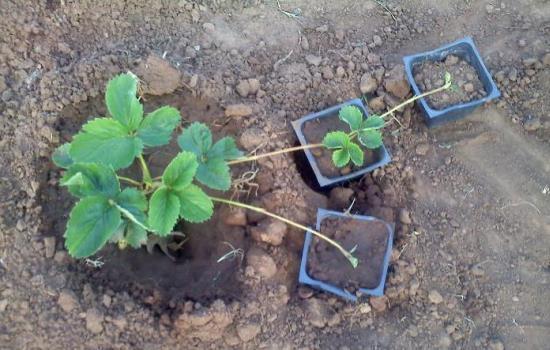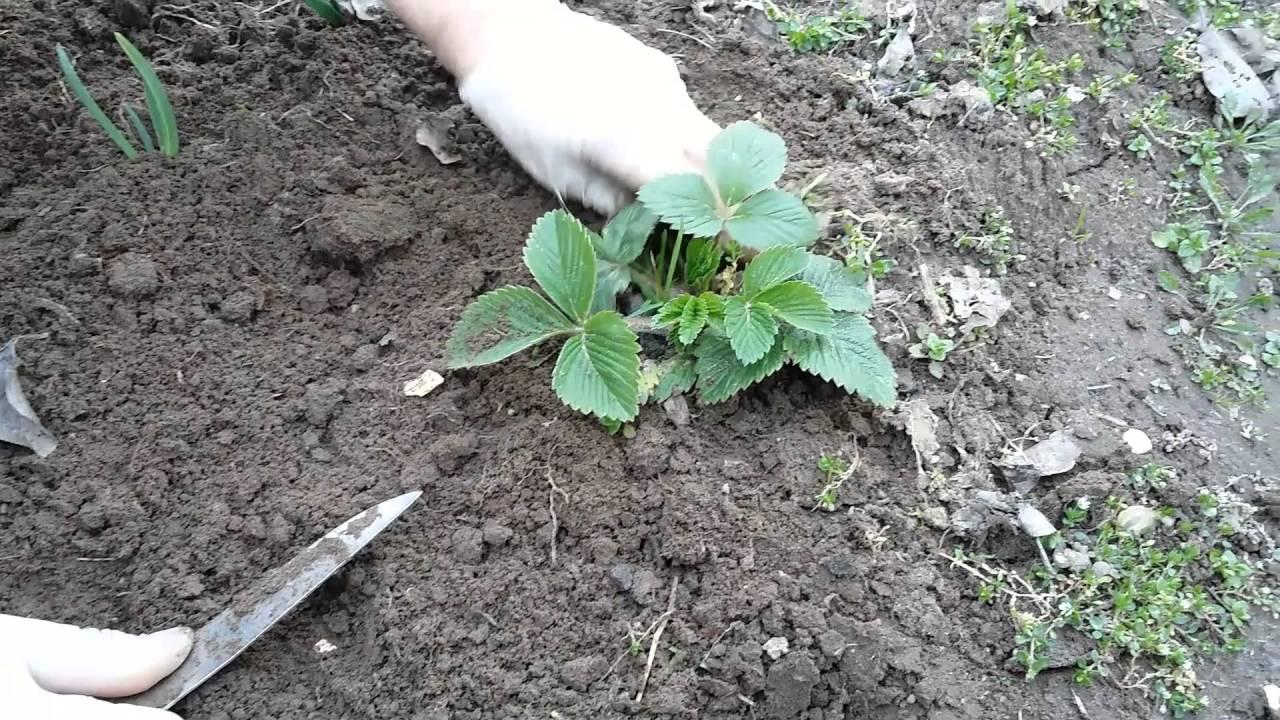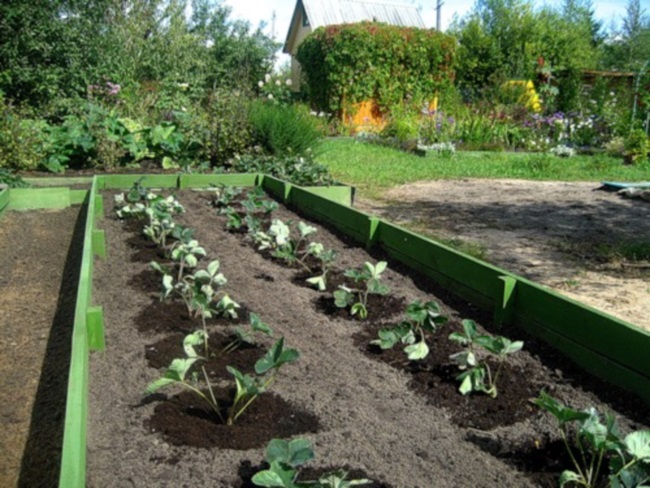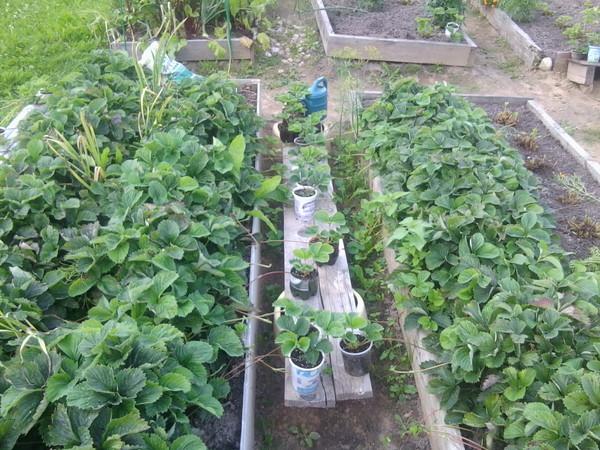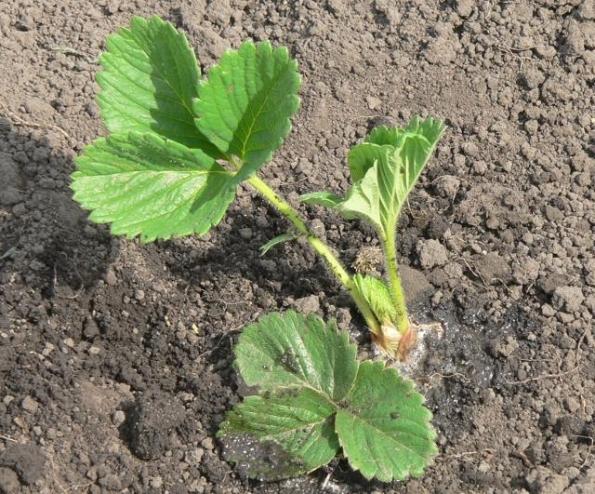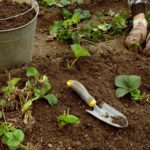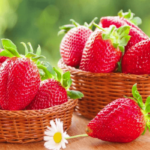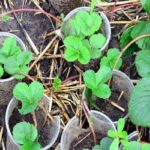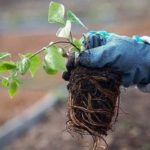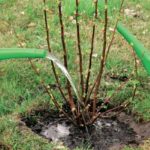Strawberries are tasty and aromatic, very healthy. Every owner of a garden plot tries to grow this healthy berry. Only by observing all the subtleties of growing, propagating and replanting can one hope for a harvest. Many people wonder when and at what time to replant strawberries. Plant replanting and timing have their own subtleties, the observance of which determines the health of the bushes and the weight of the berries.
- Why do you need to replant strawberries?
- When is the best time to transfer to a new location?
- Advantages and disadvantages of spring transplantation
- Summer transfer
- Pros and cons of transplanting in the fall
- Transplant methods
- "Mustachioed" transplant
- Transplant without a mustache
- How to transplant strawberry seedlings correctly
- Selecting and preparing a new location
- Transplant technology
- Further care after transplantation
Why do you need to replant strawberries?
Strawberry bushes bear fruit actively for 3-4 years. Then the bush “gets old”, the berries become small, and the yield decreases. We need to replant garden strawberries to rejuvenate the plantation. Diseases and pests can also accumulate at the growth site. Transplanting to another location will prevent the threat of infection of weakened plants by harmful bacteria.
When is the best time to transfer to a new location?
Weather with moderate warmth and rain allows you to replant plants at any suitable time. Spring replanting begins in April, after the appearance of young leaves. In the summer you can start replanting after harvesting.
Autumn planting can last two months, but the last time for transplanting is three weeks before the first frost.
Advantages and disadvantages of spring transplantation
In spring, you can plant new varieties of strawberries purchased from gardening farms. Over the summer, the plant adapts well to new conditions. It is recommended to cut out flowers and mustaches in the first season.
Preparing the bed for replanting plants in the spring begins in early autumn. The soil is dug up with the addition of rotted manure. The best choice for this is chicken manure. Before winter, the bed is periodically weeded from weeds or sown with green manure (phacelia). Green manure can be left over winter, without processing.
Garden strawberries are transplanted when the first leaves turn green and the air temperature rises to +20 °. A good time for this work is cloudy weather or the afternoon. The leaves show the condition of the overwintered bush. Large bushes can be divided and replanted in a new place, in filled and fertilized holes. The first season the harvest will not be significant enough, the berries may be small.Only next year the plant will produce a full harvest.
Summer transfer
In summer, hot weather causes difficulties. Replanting can be done after harvesting, in August, and also replanting flowering strawberries and green berries, but with additional watering.
A flowering bush is dug up with a clod of earth, without damaging the roots, and transferred to a prepared, moist hole. Such transplants need to be covered with agrofibre during the heat of the day in July and August, as well as additional watering. The mustache is trimmed, and a week after transplantation, the plants are fertilized with liquid plant infusion.
Pros and cons of transplanting in the fall
The most optimal time for transplantation is the autumn season. After fruiting, the bushes gain strength and throw out new leaves and tendrils. Autumn transplanting begins in early September and lasts until the end of October. Before winter, the plant has time to take root and lay flower buds for next year's harvest. For the winter, the beds are covered with agrofibre, branches of marigolds, and wormwood. The shelter will protect the plants from severe frost, and the wormwood from pests. In the spring, in April, strong seedlings begin to develop, and with proper watering and fertilization, they produce a full harvest.
Transplant methods
Strawberries are transplanted in two ways:
- "mustachioed";
- “without beards”, dividing the bush.
"Mustachioed" transplant
After harvesting, the bushes grow tendrils with rosettes of young plants. In order not to deplete the plants, several bushes are selected as queen cells for propagation, and the tendrils are cut out on the rest.
Important: for “mustached” propagation, rosettes must be taken from two-year-old queen cells, preferably the first ones from the bush.
They repeat the parameters of the mother bush and bear fruit the following year.Young rosettes are pressed onto moist soil for rooting, using small pins. Further care consists of watering and weeding. Rooted rosettes are transplanted to a new bed.
If the transplant is planned for a small plantation, the rosettes are immediately placed in 200-gram plastic cups with soil. By watering them, you can visually assess the degree of root development; they can be seen in a transparent glass. At the beginning of September, it will be possible to transplant a fully developed plant from a glass with a 100% guarantee of survival.
Transplant without a mustache
To transplant one-year-old plants, dividing the bush is used. The bush should be dug up and divided into parts with buds using a sharp knife. Before planting, keep the prepared seedlings in the Zircon solution for better root development. The seedling is transplanted into a prepared bed, watered and shaded.
How to transplant strawberry seedlings correctly
In the spring, loosen the bed and mark the planting areas. The width between the rows is stable - 1 meter. The width between the bushes is 35-50 centimeters, depending on the variety (large strawberry varieties occupy large areas for nutrition). Holes are dug into the bayonet of the shovel and spilled with Zircon.
This drug, diluted according to instructions, disinfects nitrates in the soil and stimulates the growth and development of plant roots. You should additionally add a matchbox of ash and a teaspoon of ammonium nitrate into each hole.
Important! You cannot apply large amounts of fertilizer at once. An overdose leads to burns of the roots or “fatification” of foliage without an ovary.
Selecting and preparing a new location
To transplant strawberries, choose a sunny place without drafts. Good predecessors matter:
- peas;
- beans;
- garlic and onion,
- carrot;
- leaf salads.
You cannot use a bed where nightshade crops grew for replanting. After them, harmful “baggage” remains in the soil, after which treatment with fungicides is applied, which is undesirable for growing berries.
Transplant technology
Transplantation begins with the selection of seedlings. You can grow them yourself or purchase them at gardening centers. Upon purchase, you are provided with a certificate of plant quality; you can get advice from a specialist on further care of the purchased variety. Each variety has its own characteristics:
- ripening time;
- variety productivity;
- size and taste of berries;
- immunity to diseases;
- transportability.
Purchased plants must be properly packaged to prevent the roots from drying out. Before planting, it is good to dip the roots in a mash of a mixture of 4 liters of water, Kornevin, clay and rotted manure, the thickness of rare sour cream. In the afternoon, the plants are planted on the prepared bed, watered and mulched.
The root collar of the plant is not buried, this affects growth and fruiting. It should protrude 2 centimeters above the soil level, and after watering and the soil settles, the level of the neck should be at the level of the previous growth. The soil around the plant is mulched and the bed is shaded.
Further care after transplantation
Further care consists of watering, fertilizing, trimming the mustache and old leaves. Weeding is done carefully without damaging the roots. By using mulching, you can get rid of this type of work. The row spaces are sown with phacelia in the spring, and green manure is used as mulch throughout the season. You can also use straw, mowed or weeded young grass.On hot days, plants need to be covered with white agrofibre.
If you follow the tips for replanting strawberry bushes, you will get a beautiful young bed with lush flowering and a decent harvest.


